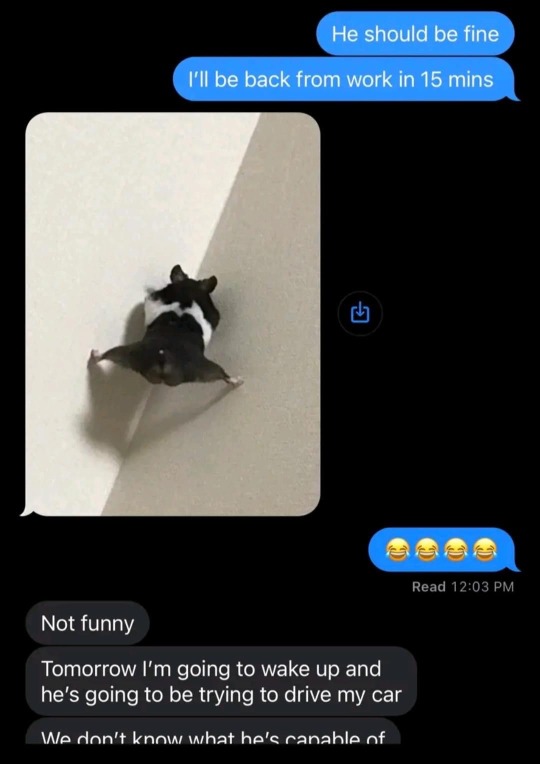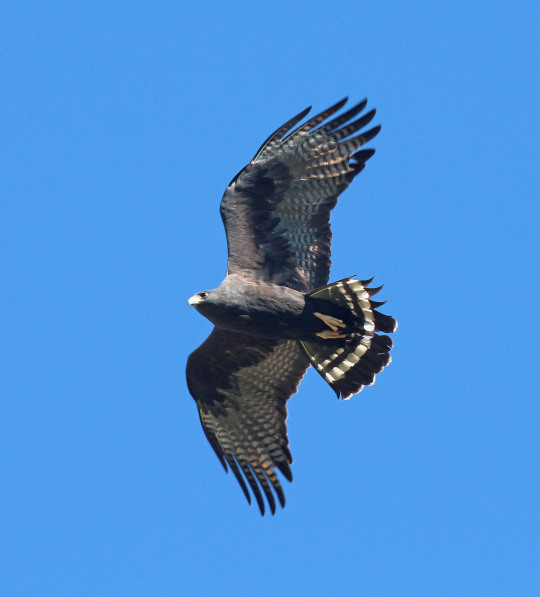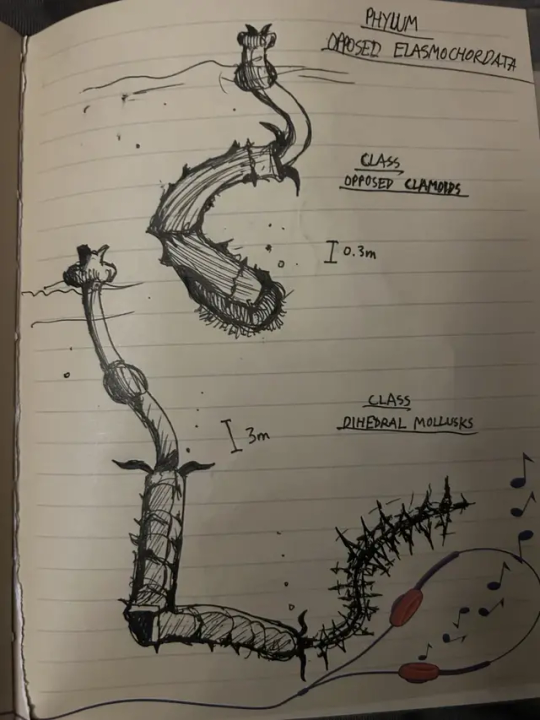#dihedral
Explore tagged Tumblr posts
Text
GÉNESIS UNIVERSO DIÉDRICO
1 note
·
View note
Text
just remembered that when i first got really into turkey vultures i learned about airplanes bc i had to go look up 'dihedral' because the turkey vulture is one of the best soaring birds we have in my area and it's because of not just their wing shape, which is both more tapered toward the tips AND more spread out, excellent for taking advantage of wind currents and, say it with me everyone, thermals but because of their dihedral, which is the upward angle at which the wings sit, which allows them to soar without expending much energy for such long periods of time anway i quickly forgot all about how dihedral works on airplanes because i was too busy with my best friend cathartes aura aura anyway who wants to talk abt the noble turkey buzzard im simply dying to talk abt the noble turkey buzzard
#i wasnt an animorphs kid growing up thats a recent thing but i still probably spent as much time as one considering the thermals#simply bc they have deep significance to mr cathartes aura (the turkey vulture)#its one of the more dramatic dihedral angles like if you happen to see a hawk youll notice the difference theirs is more slight#i like being a bird watcher but not really for songbirds. like songbirds are nice but i like the soaring Beasts . so sexy
56 notes
·
View notes
Text

Grimm Dihedral Synchro-Helix Actuation Door Double IPA (Picked up at Whole Foods in Plymouth Meeting, PA). A 4 of 4. The addition of phantasm takes this over the top -- tons of bright tropical fruit and white wine notes as well as quite a bit of citrus and stone fruit behind it. Just incredibly pungent. The body is nicely balanced with some fruity sweetness up front behind the hop profile and a dry and clean finish that's bitter, but not overly aggressive.
#grimm#dihedral synchro-helix actuation door#double ipa#dipa#ipa#india pale ale#beer#whole foods#plymouth meeting#pa#pennsylvania#4
13 notes
·
View notes
Text
I don't know why I find this so funny, but I think it's fricken hilarious and therefore must share.



135K notes
·
View notes
Text
Polyhedron of the Day #129: Pentagrammic antiprism


The pentagrammic antiprism is a uniform prismatic polyhedron. It has 12 faces, 20 edges, and 10 vertices. Its Schläfli symbol is sr{2,5/2}. It has dihedral symmetry. Its dual is the pentagrammic trapezohedron.
Maeder, R. E. (1997). Pentagrammic antiprism [Image]. MathConsult AG. https://www.mathconsult.ch/static/unipoly/79.html.
107 notes
·
View notes
Text
today's mimic: zone-tailed hawk, buteo albonotatus

the zone-tailed hawk has been suggested to mimic turkey vultures, most obviously in their flight pattern: the hawks fly unusually with wings raised dihedrally, and will rock back and forth in a similar manner to turkey vultures. additionally, the silhouette and the shape of the flight feathers resemble a turkey vulture much more than other similar hawks. this is an example of aggressive mimicry, since turkey vultures rarely hunt animals, while the zone-tailed hawk is an active predator. its prey will be more likely to ignore the presence of the bird, believing it to be a harmless scavenger. the kettling behaviour of turkey vultures aids the zone-tailed hawk, as it can blend into large gatherings of vultures. although up close the two animals are very different, even experienced birders may have difficulty identifying a zone-tailed hawk from its deceitful silhouette and flight pattern.
model:

photo by roy lowe
flight pattern comparison:
youtube
youtube
#mimicposting#aggressive mimic#vertebrate mimic#animal mimic#visual mimic#zone-tailed hawk#buteo albonotatus#hawk#mimicry#ornithology#birds#birds of prey#animal facts#zoology#biology#sorry for the late post!#no video description
243 notes
·
View notes
Text
Don't worry, if you spend a while considering a space with a group action up to homotopy you can conclude that no one really understands group actions.
Seeing that the Weyl group W_G(H) := normalizer of H in G / H is the set of equivariant (ie group action preserving) maps from G/H to G/H is pretty neat though, would recommend, it's a fun exercise. G/H here is the set of H cosets of G, with a G action given by g . H = gH. (Remember that for G/H to be a group H must be normal, but you can always write a set of cosets G/H).
I did that one a while ago and then recently had to remind myself and do it for the case G=O(2) and H=Z/2 generated by a map with determinant -1, ie a flip. Good stuff.

Finally understanding group actions and all it took was looking at this picture (from Michael Artin’s Algebra)
#eg consider computing equivariant (ie Bredon) homology of a point for that dihedral group. I dont think anyone has done this(!)#that tag was about the first paragraph not the exercise
52 notes
·
View notes
Text

Kelly Johnson designer and inventor of the SR 71 did have a great sense of humor. The kind of sense of humor, that you would not expect from his poker face.
When you watch the new Dave Peters interview one of the stories that Dave talks about is when he had the privilege of hanging out with genius, Kelly Johnson, and test pilot Bill Parks. He asked a question about the wings and about how they had that strange dip in them like a Kligon Star Trek vessel.
Kelly said” Oh after we took it up for the first mission.
It came back like that.
Dave goes. Oh, I’m not really believing this but it’s Kelly Johnson aeronautical genius so…
He said we straightened the wings out and sent it back up and it came back from 80,000 feet the same way AGAIN with the wings buckled in that one spot so we decided to keep it that way.
Well, in the meantime, Bill Parks crossed his legs to stop from wetting his pants because he was laughing so hard . Then Kelly said It was one of the things that helped us configure the center pressure at high speed by diverting configuration. Called the Transverse negative dihedral.
So now you know.
The men that I knew who flew the SR 71 always had a wicked sense of humor. They laughed hard and they played hard and they worked even harder.
Linda Sheffield
@Habubrats71 via X
#sr 71#sr71#sr 71 blackbird#blackbird#aircraft#usaf#lockheed aviation#skunkworks#aviation#mach3+#habu#reconnaissance#cold war aircraft
16 notes
·
View notes
Text
Symmetry: The beauty of Mathematics
Listen, symmetry isn’t just aesthetic. It’s the backbone of mathematics, the reason your equations behave, and honestly, the only thing keeping some functions from spiraling into utter chaos. And here’s the truth: symmetry isn’t just about looking pretty; it’s about mathematical harmony, balance, and the deeply satisfying moment when everything aligns perfectly, just as it should.
The Y-Axis Mirror Selfie (a.k.a Even Functions)



2. The Rotational Drama Queens (a.k.a Symmetry about the Origin; odd functions)



3. Group Theory Symmetry : the reason your Rubik's Cube works and why physicists don’t spiral into existential despair when studying quantum particles.
Cyclic groups, Dihedral groups and Lie groups
4. Polar Coordinates—aka the Art Students of Math
Polar graphs SCREAM symmetry. Roses? Circles? LEMNISCATES?





the bottom line : Symmetry is how we recognize order in chaos. And symmetry isn’t just confined to math. You see it in biology (DNA), art (da Vinci’s Vitruvian Man), and even in the way we naturally find faces with symmetry more attractive. It's everywhere, from the humble parabola to the complex eigenfunctions of quantum systems. So next time you plot a graph, take a second to appreciate the sheer elegance of its symmetry. Or lack of symmetry—because asymmetry can be just as hot.
#math#mathematics#mathblr#symmetry in math#even functions#STEM#academia#math academia#fun with graphs#math graphs#graph plotting#polar coordinates#group theory#group theory symmetry#math elegance
25 notes
·
View notes
Text
List of finite groups I know of that are their own automorphism group:
All symmetry groups except S2 and S6
Dihedral groups of order 3 (6), 4 (8), and 6 (12)
I am aware that one group was mentioned twice here. I do not care
8 notes
·
View notes
Text

An old straight-dihedral B-25 contrasts with the crank-winged Mitchells behind it at Felts Field, Spokane, Washington. 1941
26 notes
·
View notes
Text


Fifth Phylum !!111! Opposed Elasmochordata STILL in Superphylum Near Bilateral !!
PHYLUM OPPOSED ELASMOCHORDATA
Phylum containing a bidirectional, plated, segmented nerve column and an exoskeleton of calcium carbonate.
(AN1 A2-c) Clade: Chamatae
A clade of opposed elasmochordates that contain a calcium carbonate shell, respirate with an active muscle valve, and locomote via ciliary or muscular valve locomotion.
Class Opposed Clamoids
Class of chamatae that consume organisms through a baleen-analagous filter located on one of the valve ends of the opposition.
Class Dihedral Mollusks
Class of chamatae that consume organisms with an extending tooth-barbed muscle located on one of the valve ends of the opposition.
(AN1 A2-d) Clade: Findopseudopescadae
A clade of opposed elasmochordates that contain an enamel shell, an interior support structure of hyaline cartilage, respirate with pseudo-gill structures, and locomote via water jet excretion or rotation.
Class Walking Steeples
Class of findopseudopescadae that have a semi-flexible exoskeleton, 3-4 long and rigid appendages, a central dorsal node head lined with sensing pili, and are completely benthic.
Class Bifin Aquatics
Class of findopseudopescadae that have a flexible outer shell, 2 ends ending in forked or lunate fins, and use labriform locomotion to swim in pelagic environments.
You may have noticed two things with these guys ! First of all, they are split down the middle! The head end of the nerve column ends at two tails ends as opposed to one. This allows for both enhanced growth and sensing, a splitting and managing of different tasks (most observable on the opposed clamoids and dihedral mollusks) and also redundancy in the event of a predator attack! These guys are also "elasmochordata", which means their nerve chord is segmented into many plates that can be bent and stretched, acting as both a "spine" and a "nerve cord" that can be separated into different functions (similar to how each vertebrae of a mammal can control different body systems)
The second thing you may have noticed is that there are quite a lot of phyla ending in "cord" or "chordata", while on Earth Chordates are just ONE phylum. Well, on Jom'Gol, these different creatures have had a longer period of time to differentiate and speciate-- they are already distinct enough on phylogenetic records. However, the physical differences are very unique as well ! Each type of "nerve cord" has a different time, material, shape, growing structure, and placement that it develops in during the embryo-- and although some creatures may look similar, even an inspection of the spinal cord both during adulthood will show wildly different shapes between phyla!
#art#digital art#artists on tumblr#worldbuilding#jomgol#spec bio#spec evo#speculative biology#speculative evolution#speculative zoology#speculative worldbuilding#creature design#creature
12 notes
·
View notes
Text






McLaren & Lego Unveil Lego Technic McLaren P1
The British supercar maker McLaren Automotive and the Lego Group today unveil their latest collaboration paying tribute to the world’s most pioneering hybrid hypercar, with the introduction of the Lego Technic McLaren P1.
The McLaren P1 redefined automotive high-performance as the most exciting, most capable, most technologically advanced and most dynamically accomplished supercar of its time. The P1 leveraged McLaren’s advanced motorsport-based engineering, featuring ground-breaking advances in weight reduction, packaging, high-speed performance, powertrain and aerodynamics.
Created with the intention of being ‘the best driver’s car in the world on both road and track’, the design and technical specifications of the McLaren P1 provided the ideal foundation to deliver on this ambition. The remarkable hypercar is recognized as a landmark both for McLaren and the development of high-performance hybrid vehicles.
The incredible engineering and technology underpinning the performance, style and functional design the McLaren P1, made it the perfect challenge for the Lego Technic team to replicate in 1:8 scale.
Unveiled as part of the Lego Technic Ultimate Car Concept Series, the all-new 1:8 scale Lego Technic version consists of 3,893 elements and each car features a unique serial number which unlocks special behind-the-scenes content. The model has a 7-speed gearbox with 2 shifter drums, suspension, V8 piston engine, adjustable rear wing, and opening dihedral doors with advanced mechanism – all guaranteeing an immersive building experience from start to finish that is authentic to the real McLaren P1.
The Lego Technic McLaren P1 set will be available from 1st August 2024 priced at €449.99 / £389.99 / $449.99.
9 notes
·
View notes
Text
Polyhedron of the Day #192: Ten-of-diamonds decahedron


The ten-of-diamonds decahedron is a space-filling polyhedron. It has 10 faces (8 triangles, 2 rhombi), 16 edges, and 8 vertices. Its rhombic faces are opposite one another, hence the playing card name. It has dihedral symmetry. It is the basis of the ten-of-diamonds honeycomb, which is the dual of the alternated bitruncated cubic honeycomb. This polyhedron's dual is the skew-truncated tetragonal disphenoid.
Weisstein, E. W. "Ten-of-diamonds decahedron." [Image]. From MathWorld--A Wolfram Web Resource. https://mathworld.wolfram.com/Ten-of-DiamondsDecahedron.html.
Right image created by Tomruen, CC BY-SA 4.0, https://upload.wikimedia.org/wikipedia/commons/1/17/Ten-of-diamonds_decahedron_skew.png.
14 notes
·
View notes
Text
I take it back, Dihedral groups of order 4n, that is, symmetries of a regular 2n-gon, suck. Fuck 2 it's a problem.
#I dont mean it I still love 2.#I'll just ignore that prime it's fiiiiiiiine all the homies ignore characteristic 2
7 notes
·
View notes
Text
the dihedral grouper
2 notes
·
View notes